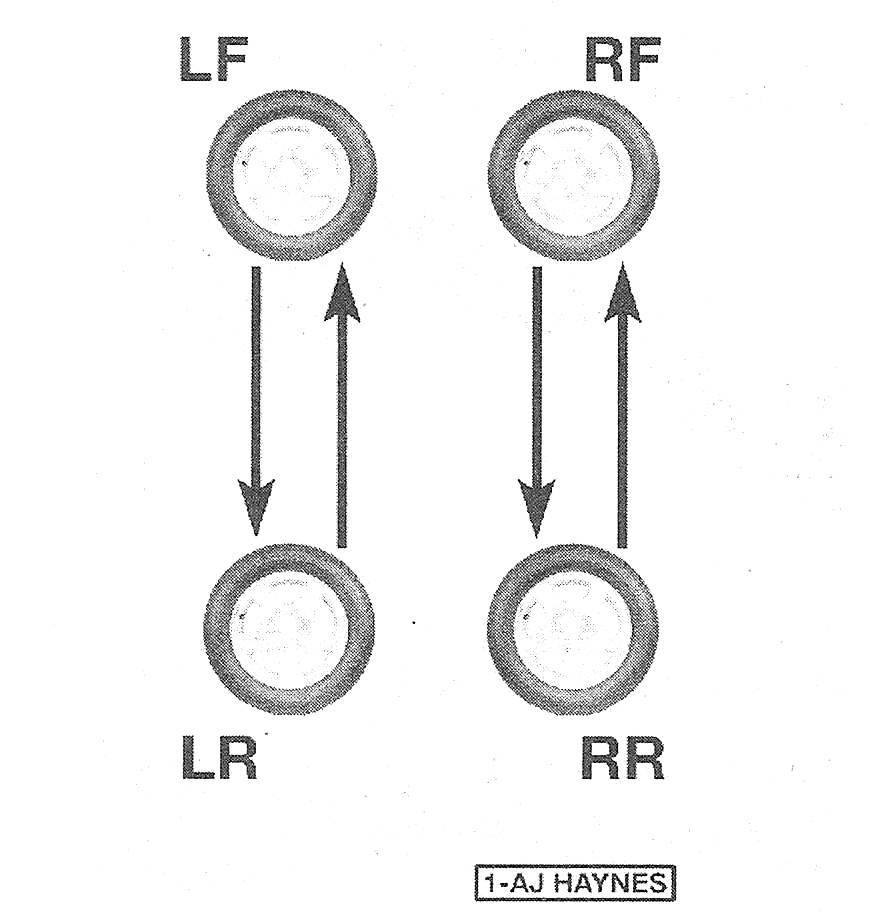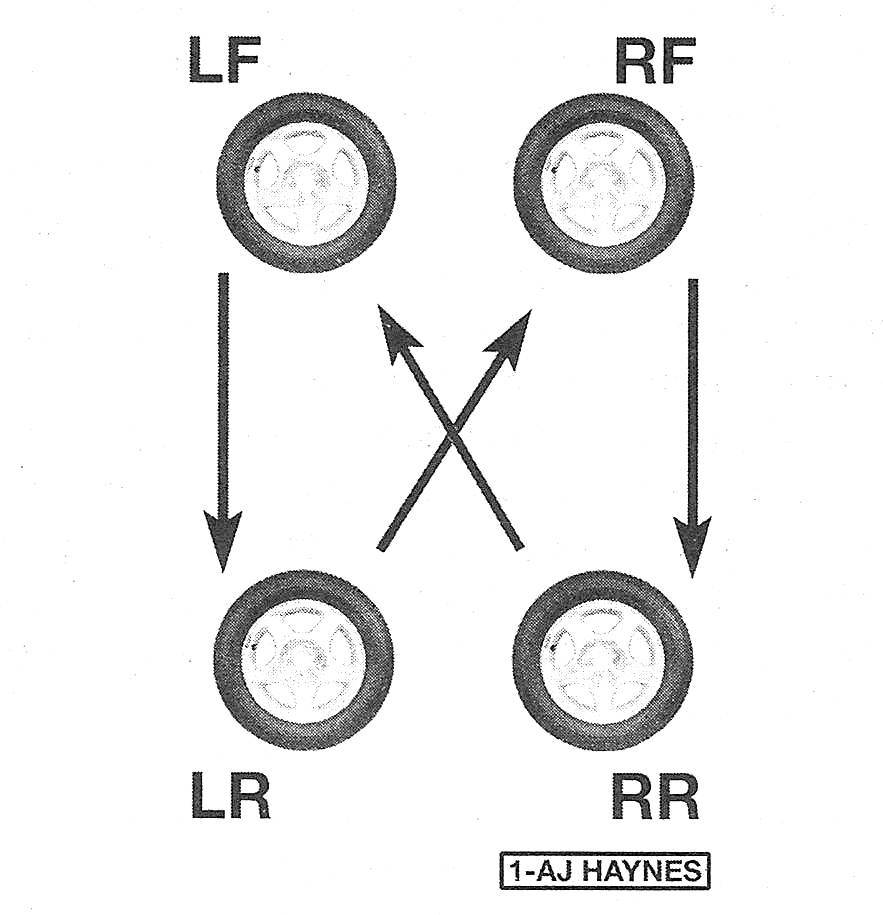Tire rotation
1. The tires should be rotated at the specified intervals and whenever uneven wear is noticed. Since the vehicle will be raised and the tires removed anyway, check the brakes (see Brake check) at this time.
2. Radial tires must be rotated in a specific pattern (see illustrations). Most models are equipped with non-directional tires, but some sport, models may be equipped with directional tires, which have a specific rotational pattern. When choosing replacement tires, examine the sidewalls. Directional tires have arrows on the sidewall that indicate the direction they must turn, and a set of these tires includes two left-side tires and two right-side tires. The left and right-side tires must not be rotated to the other side.
12.2a the recommended tire rotation pattern for directional tires

12.2b the recommended tire rotation pattern for non-directional tires

3. Refer to the information in Jacking and towing at the front of this manual for the proper procedures to follow when raising the vehicle and changing a tire. If the brakes are to be checked, do not apply the parking brake as stated. Make sure the tires are blocked to prevent the vehicle from rolling.
4. Preferably, the entire vehicle should be raised at the same time. This can be done on a hoist or by jacking up each corner and then lowering the vehicle onto jack stands placed under the frame rails. Always use four jack stands and make sure the vehicle is firmly supported.
5. After rotation, check and adjust the tire pressures as necessary and be sure to check the wheel lug nut torque.
6. For further information on the wheels and tires, refer to Chapter Suspension and steering systems.